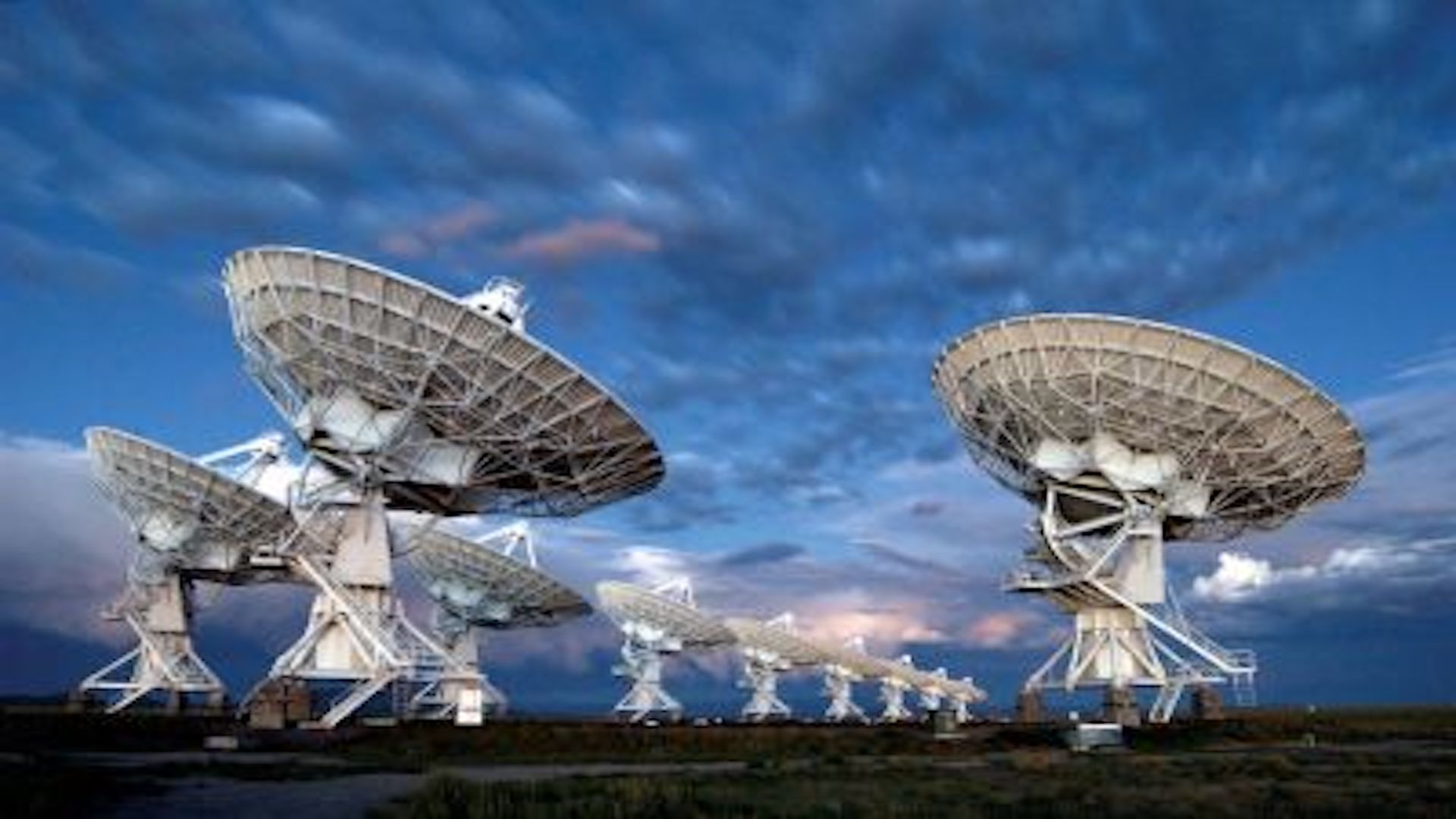SETI scientists begin huge new hunt for intelligent aliens
The new SETI experiment is being conducted on the Very Large Array of radio telescopes.

The search for alien technosignatures has dramatically expanded, thanks to a new experiment involving an alliance between the SETI Institute, Breakthrough Listen and the National Radio Astronomy Observatory (NRAO).
The new project is called COSMIC ("Commensal Open-Source Multimode Interferometer Cluster") and is in operation at the Karl G. Jansky Very Large Array (VLA) of radio telescopes in New Mexico. The VLA was featured in Robert Zemeckis' 1997 movie "Contact," starring Jodie Foster and based on Carl Sagan's famous novel of the same name.
COSMIC makes this possible and delivers a huge jump in coverage. Whereas previous SETI surveys have only been able to scrutinize a few thousand stars, COSMIC on the VLA will listen in on hundreds of thousands, and potentially millions, of star systems at frequencies between 0.75 and 50 GHz. It will enable a detailed SETI search of 80% of the entire sky (from declinations of -40 degrees to the zenith), which is orders of magnitude more in depth than all previous SETI searches combined.
Related: The search for alien life
"Currently the focus is on creating one of the largest surveys for technological signals, with over 500,000 sources observed in the first six months," said COSMIC project scientist Chenoa Tremblay, an astronomer at the SETI Institute, in a press statement. Currently, COSMIC is scanning cosmic radio sources at a rate of about 2,000 per hour.
COSMIC is able to piggyback on the VLA Sky Survey (VLASS), which commenced its third observing run back in January 2023. COSMIC receives a copy of the raw data collected by the 27-dish radio array, before the VLA does any automated, standard processing to it. This allows SETI scientists to process the data however they want to, and in real time, too.
This rapid analysis is crucial. Often, SETI searches have detected interesting narrowband signals, but they are not noticed until weeks or months later when the data is analyzed. Often, when astronomers go for a second look, the signal has vanished, so there's no way to know if it was a real E.T. signal or, more likely, radio frequency interference (RFI) from human activities on (or in orbit around) Earth. Bona fide ET signals could be brief bursts and require quick identification and follow up.
Breaking space news, the latest updates on rocket launches, skywatching events and more!
Speaking of rapid signals, COSMIC has extremely high time sensitivity; it's able to detect radio signals as short as nanoseconds. Again, this is an important ability to have. Transmitting across interstellar distances is not cheap: in terms of power output, the energy resources required to maintain an omnidirectional transmission across hours, days, months or years that can be detected dozens or even hundreds or thousands of light-years away is immense. More cost-effective would be for aliens to beam nanosecond pulses that hit Earth for a short time before moving on to other planetary systems, and then cycle back to Earth. Many previous SETI radio searches, however, have not had integration times short enough to detect these nanosecond, or even millisecond, pulses.
The COSMIC system has also been designed with the future in mind, by leaving room for upgrades that can keep it at the peak of SETI experimentation. For example, the number of targets that can be simultaneously observed could be increased, and machine-learning algorithms introduced to analyze the data even more assiduously.
Related: SETI & the search for extraterrestrial life
Machine-learning experiments have previously been conducted on SETI data gathered by the 330-foot (100 meters) Robert C. Byrd radio telescope at the Green Bank Observatory in West Virginia. Currently, however, the data analysis is being conducted manually using statistical techniques while scientists better familiarize themselves with how the system collects and presents data. Once they are confident that they fully understand the system, they can unleash machine learning onto it.
The system is also adaptable, and can be used for astronomical projects beyond SETI.
"The flexibility of the design allows for a wide range of other scientific opportunities, such as studying fast-radio burst pulse structures and searching for axion dark matter candidates," said Tremblay.
To enable this, COSMIC and the VLA are utilizing an ethernet-based system that will allow other experiments to simply plug in and use COSMIC's processing power. This ethernet technology is already in use at several radio telescopes, including MeerKAT (which is also conducting its own SETI experiment) in South Africa and the Murchison Wide-field Array in Australia.
As a test of the COSMIC system, Tremblay's team listened in on a data downlink at 8.4GHz from NASA's Voyager 1 spacecraft, which is currently located about 159 astronomical units (14.8 billion miles, or 23.8 billion kilometers) from Earth.
Now, with about half a million radio sources already in the database and analyzed, the biggest-ever search for aliens is beginning in earnest.
Details of the first six months of the COSMIC project are described in a new paper, with Tremblay as lead author, published on Dec. 27 in The Astronomical Journal.

Keith Cooper is a freelance science journalist and editor in the United Kingdom, and has a degree in physics and astrophysics from the University of Manchester. He's the author of "The Contact Paradox: Challenging Our Assumptions in the Search for Extraterrestrial Intelligence" (Bloomsbury Sigma, 2020) and has written articles on astronomy, space, physics and astrobiology for a multitude of magazines and websites.
